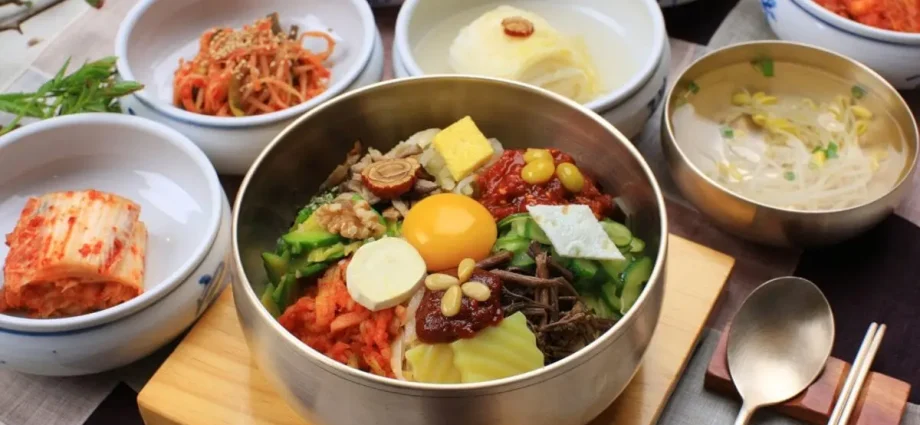Contents
In fact, Koreans, like most other nationalities, attach great importance to food culture. Although the Korean traditional food itself is considered quite simple and is not divided into festive and everyday food. It is based on rice, meat and seafood with vegetables and herbs.
The main courses are always accompanied by a variety of snacks called panjans. For example, no self-respecting Korean will start a meal if there is no kimchi – sauerkraut (or other vegetables) with red pepper on the table. For flavorings and condiments, Koreans prefer pepper (both red and black), as well as soy sauce and vegetable sesame oil. Most of the dishes will seem too hot to any foreigner, but if you show your displeasure, you run the risk of offending the owner.
The dish that many associate with Korean cuisine in the first place is bibimpal. This is rice cooked with pieces of seafood or meat, vegetables, hot sauce and an egg (fried or even raw). All this must be mixed immediately before use.
The analogue of our kebab is pulkogi. Before frying, the meat is marinated in soy sauce, garlic, pepper and sesame oil. Traditionally, all guests or visitors of the restaurant can take part in its preparation.
An appetizer without which any delicacy for a Korean will not be a joy – kimchi. This is sauerkraut (rarely radish or cucumber), generously flavored with red pepper.
Korean dumplings – mantu. For the filling, you can choose meat, fish and seafood, or vegetables. The method of preparation also varies – they can be boiled, fried, or steamed.
And again, an analogy with the cuisine of another people – Korean kimbal rolls. The difference is that the traditional filler is not raw fish, as in Japan, but various vegetables or an omelet. Koreans prefer sesame oil instead of soy sauce.
Another traditional Korean snack is chapae. These are noodles fried with pieces of meat and vegetables.
Toklogi are a kind of rice cakes. It is customary to fry them in a spicy sauce.
Pork bacon, called samgyeopsal, is also cooked in front of house guests or restaurant diners. They are served with fresh salad or sesame leaves.
They also love soups in Korea. One of the most popular is yukkejan, a beef-based vegetable soup. It is also seasoned with black and red peppers, sesame oil and soy sauce.
The favorite alcoholic drink of Koreans is soju. This is a grain-based or sweet potato-based vodka.
Health Benefits of Korean Food
Korean cuisine is rightfully considered a dietary one, because it has gained popularity among those who are watching their figure and are afraid to get better. The thing is that it is based on separate nutrition: that is, traditional Korean dishes completely exclude the combination of incompatible products. In addition, Korean food is rich in fiber and various spices, which are very healthy in their own right. By the way, it is worth noting that it is Korea that occupies the lowest line in a kind of ranking of countries whose residents are overweight and obese of varying degrees.
Dangerous properties of Korean food
However, it is worth remembering that all dishes are very generously flavored with hot pepper, therefore people who have certain problems with the digestive system should be more careful and not get carried away with exotic things. The best option is to ask the chef not to add any hot spices. Of course, in this case, traditional dishes will lose some of their original taste, but they will not bring any harm to your health.
Based on materials Super Cool Pics











Корея елінің зиян және пайдалы тағамдары